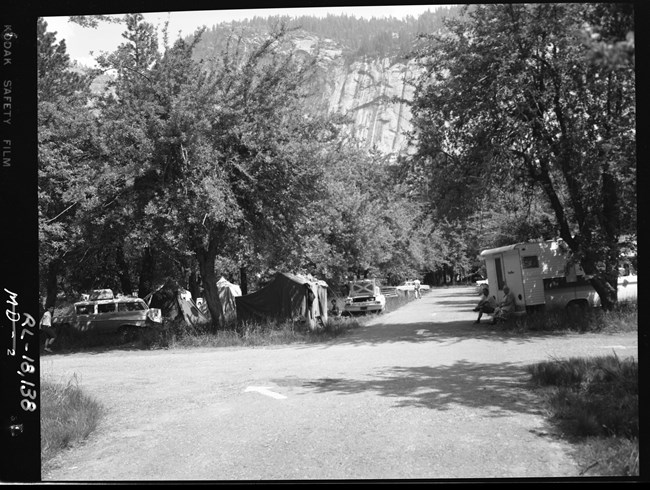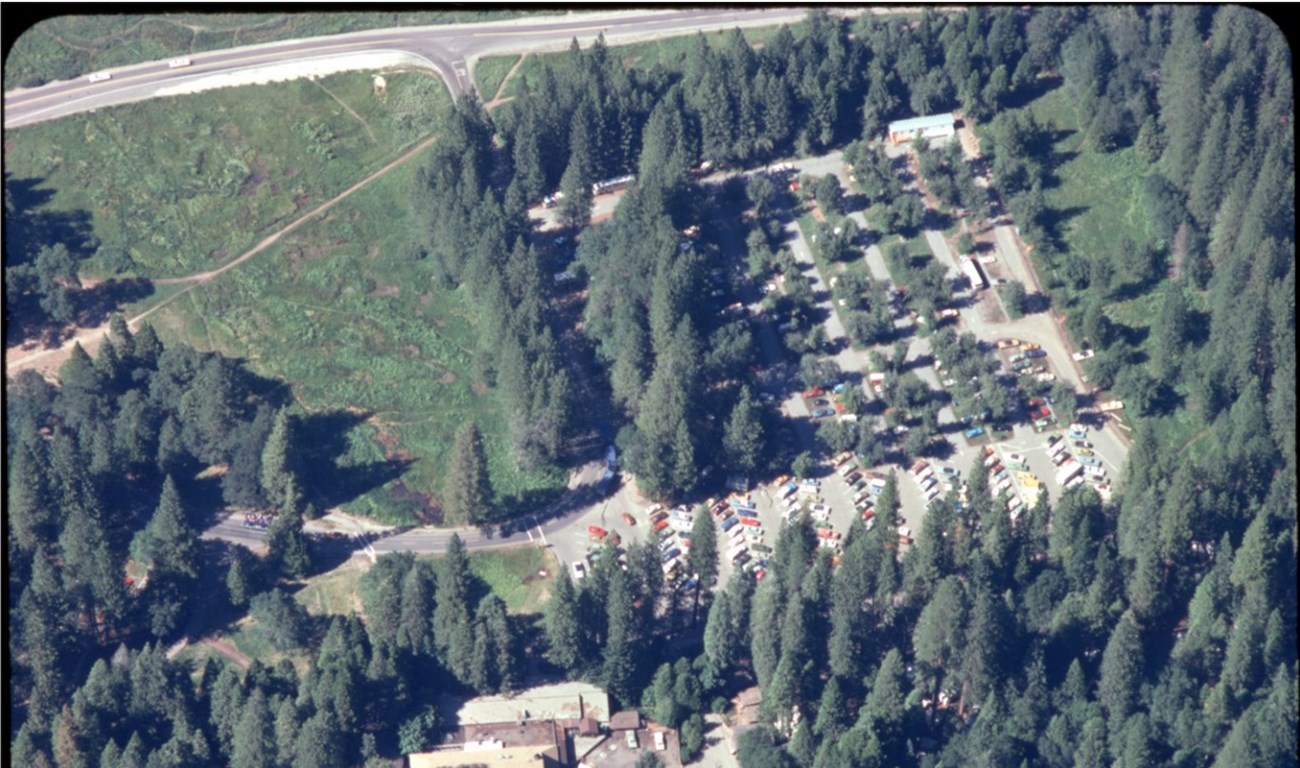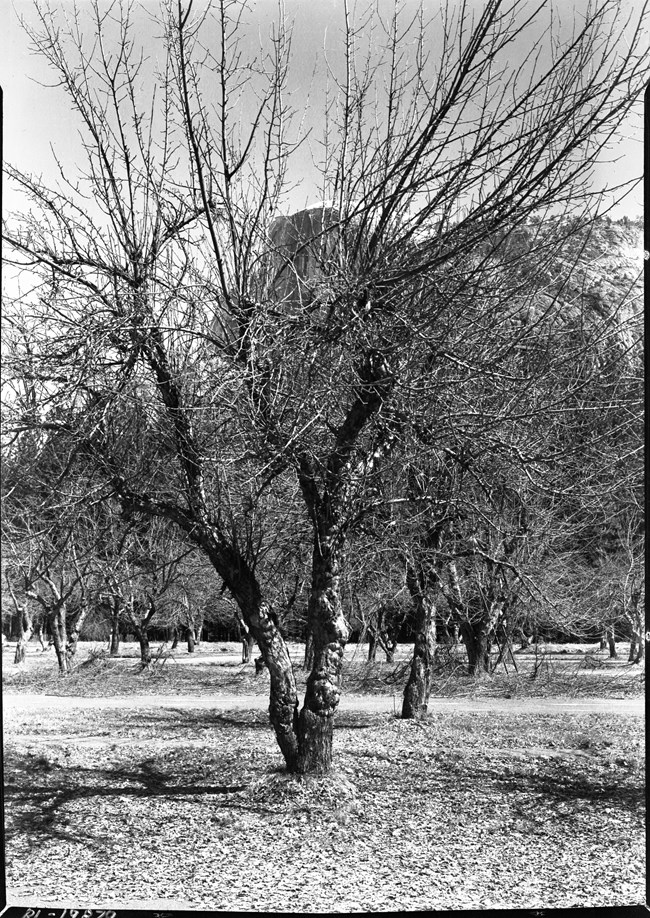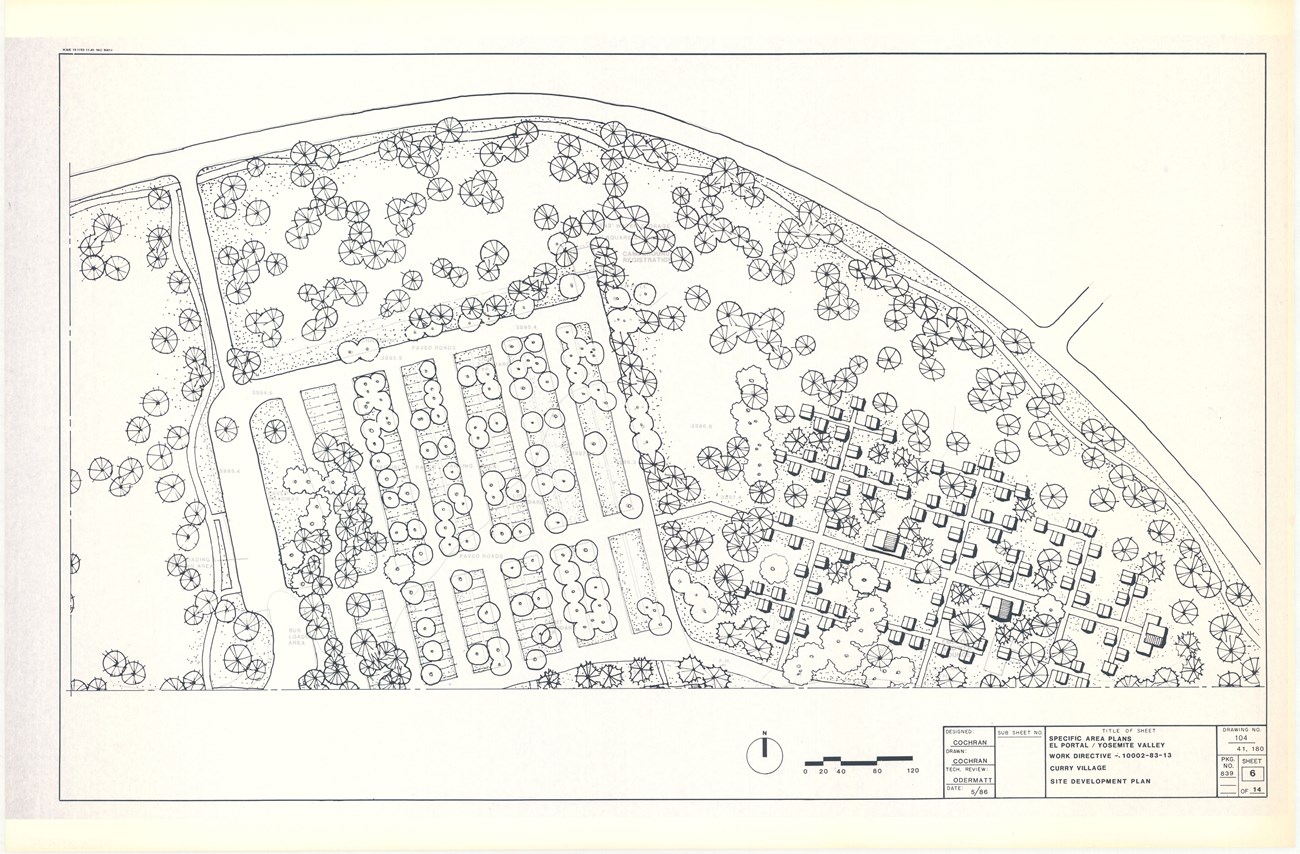Last updated: December 19, 2024
Article
Curry Orchard

NPS Archive

NPS
Curry Orchard, which was planted in 1860 by the first European American homesteader in Yosemite Valley, James Lamon, now serves as a parking lot for visitors to Curry Village. The orchard is a resilient remnant of the brief colonial agricultural period in the valley prior to the establishment of the national park.
The Yosemite Valley has long been the homeland of indigenous people who actively managed and cultivated black oak woodlands to collect acorns as an important and culturally significant food source. They lit fires in the valley to prevent pine and cedar saplings from encroaching and overshadowing the oaks and clear the way for acorn collection. US expansion into Yosemite Valley violently upset this way of life and ushered in a new era of fruit production.
James Lamon, the first European American settler to establish a homestead in Yosemite Valley, planted Curry Orchard in 1860. It was planted one year after Lamon orchard and provided apples to local businesses, fellow residents, and early tourists. Lamon continued to maintain the orchard while living in the valley up until the time of his death in 1875.

NPS

NPS
Genetic testing in 2016 and 2017 was completed on 88 trees and showed that a range of apple tree types are original to the orchard. The majority of trees represent known historic varieties, popular in the 1860s. Eleven exceptional trees stand as some of the last living examples of rare, cultivated varieties from the 1800s. Curry Orchard contributes to the Yosemite Valley Historic District which is listed on the National Register of Historic Places.

NPS Archive
